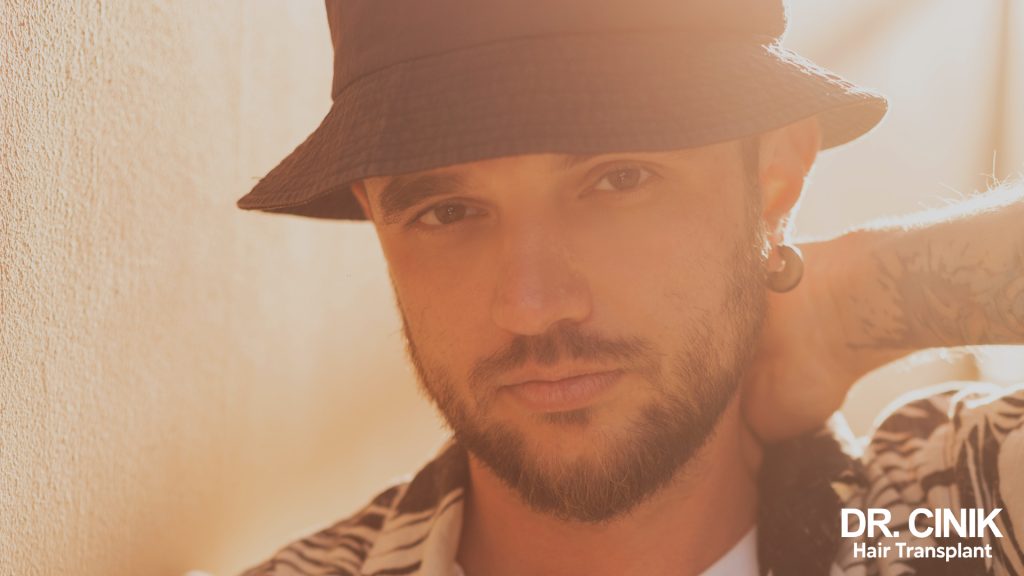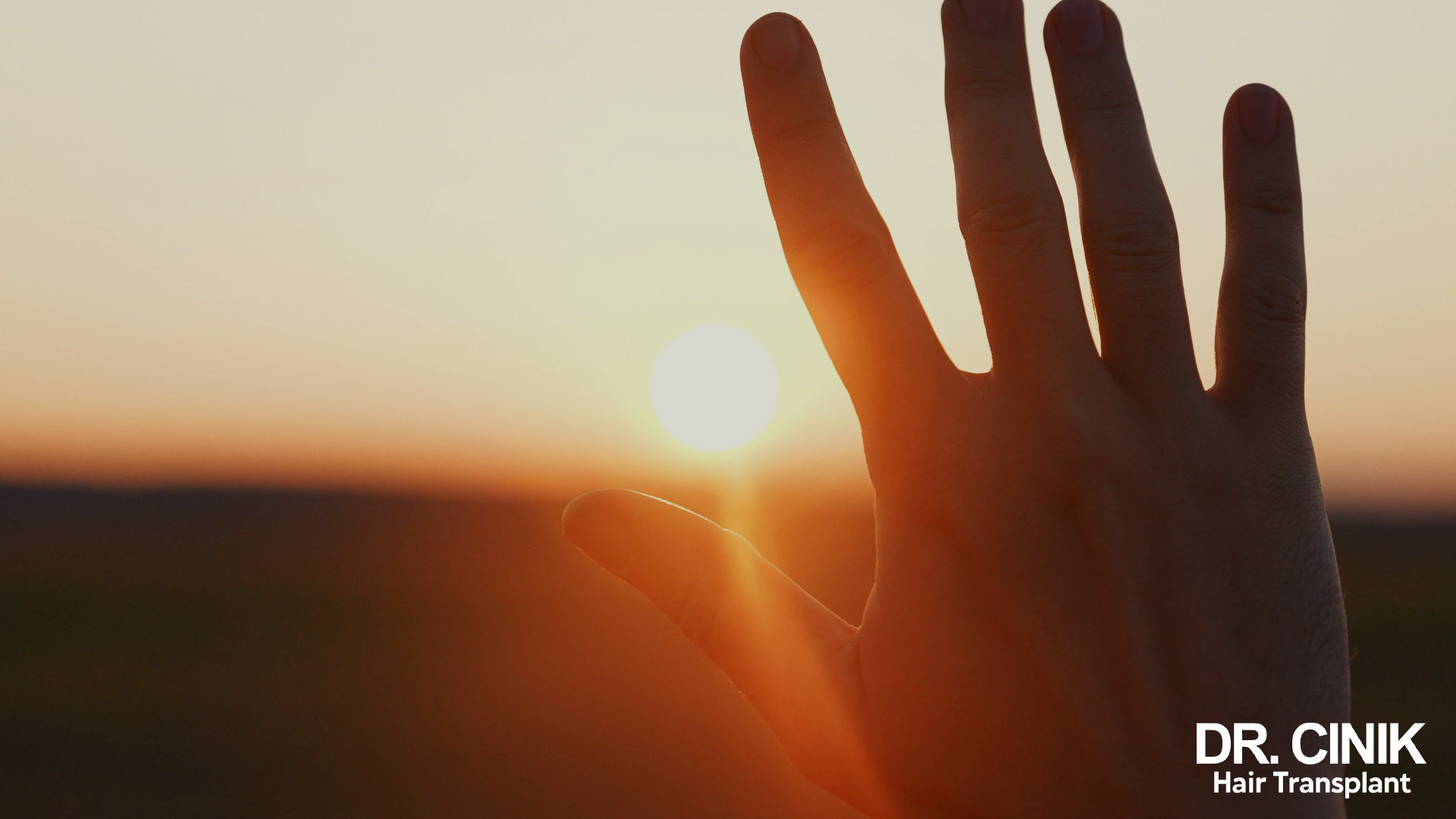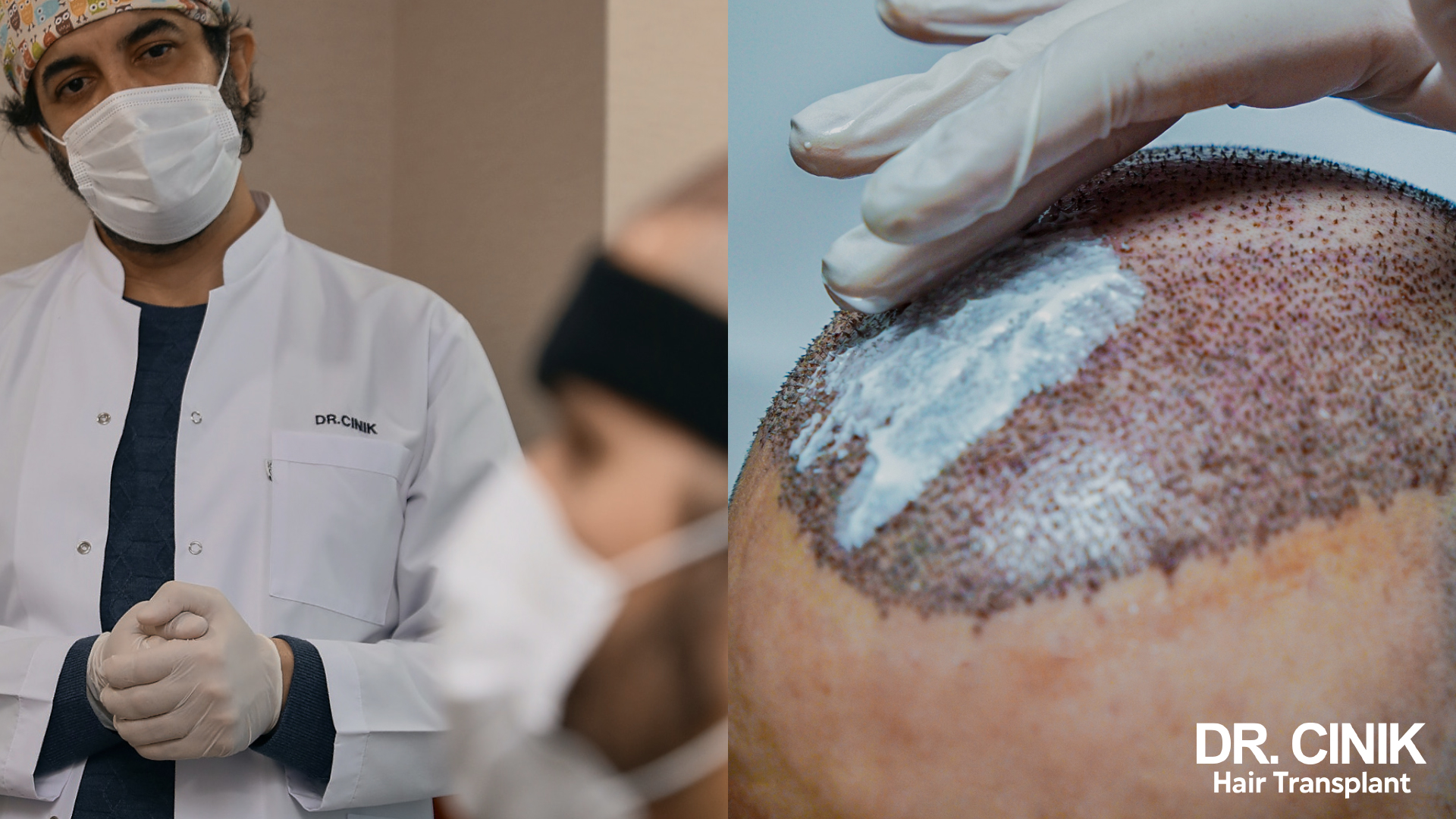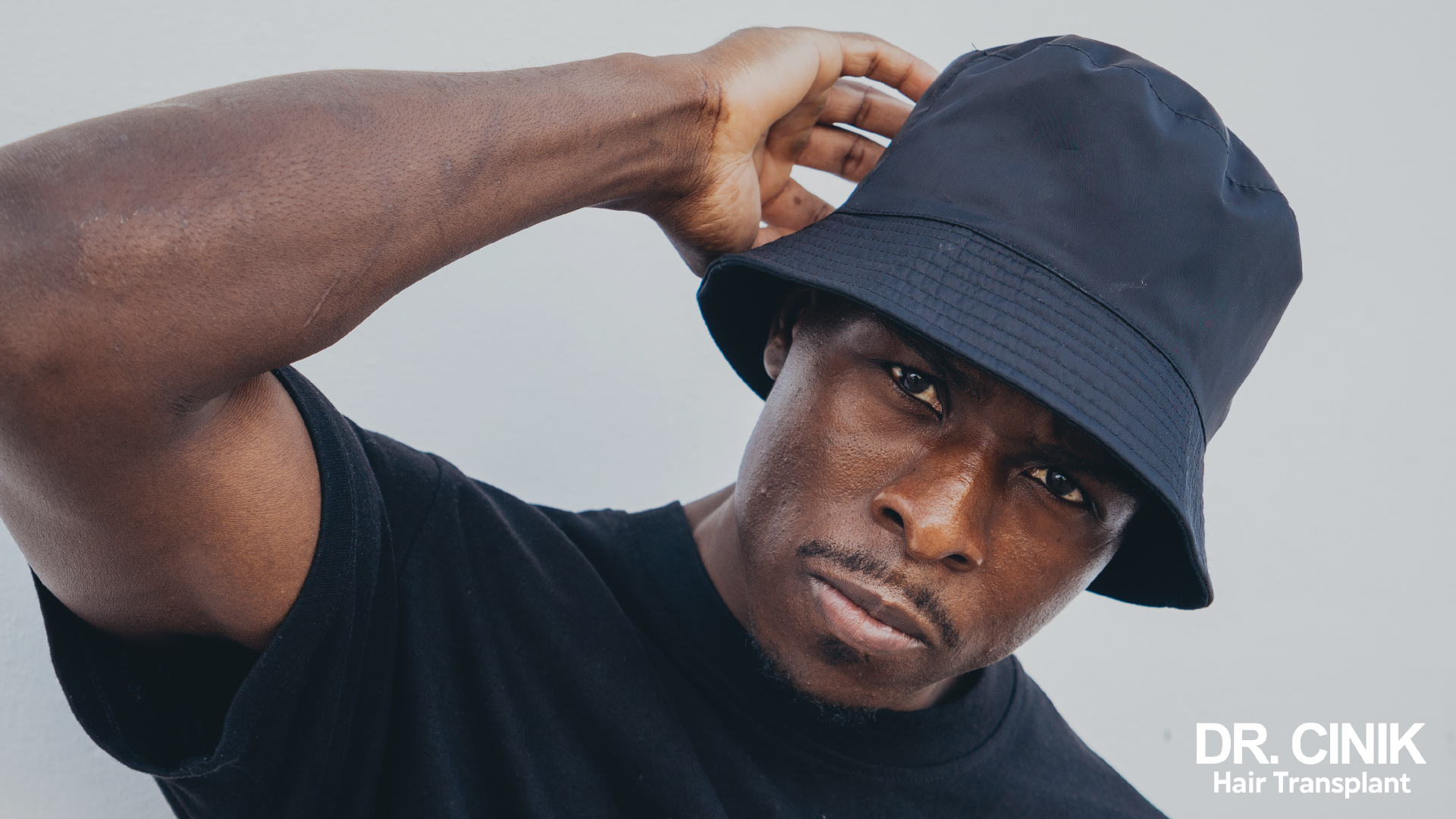Hair Transplants and Sun Exposure: Protecting Your New Grafts

Sommaire
Undergoing a hair transplant is a significant step towards restoring your hairline, but the aftercare is just as important as the procedure itself. One critical aspect of aftercare is protecting your new grafts from the sun. Exposure to UV rays can adversely impact the healing process and the ultimate success of your hair transplant. It can impede the regrowth and development of the transplanted hair and, in severe cases, may even cause the new follicles to fail. In this guide, we will delve into the potential risks that sun exposure poses to a recent hair transplant and outline essential precautions for safeguarding the health and appearance of your new hair.

The Dangers of UV Rays for Post-Operative Skin
The sun’s ultraviolet (UV) rays present a particular risk to the skin, notably when it’s vulnerable following procedures like a hair transplant.
UV Rays and Their Effects on Skin
UV light comes in three main types, each with distinct impacts:
- UVA rays delve deep beneath the surface, contributing to both premature skin ageing and an increased risk of skin cancer.
- UVB rays primarily affect the outer skin layer, or epidermis, leading to painful sunburns.
- UVC rays, fortunately, never reach us, as the Earth’s protective ozone layer absorbs them.
Even robust, healthy skin is not immune to the cumulative damage caused by UV exposure; wrinkles and pigmentation changes can emerge over time, while short-term effects include redness and burns.
However, the ramifications of UV exposure are magnified for skin that’s been compromised by surgery, such as the delicate areas recovering from a hair transplant. In these instances, the rays can significantly disrupt both the healing process and the successful take of the hair grafts.

Why is the skin more sensitive after a hair transplant?
After undergoing a hair transplant procedure, the scalp’s skin becomes particularly fragile due to various factors:
- Micro-incisions and graft placements traumatise the dermis and epidermis, triggering inflammation and cellular disruption that can compromise the skin’s natural defence system.
- The surgical process involves cutting blood vessels, which may lead to bleeding and bruising, further promoting inflammatory responses.
- UV-protective cells, known as chromatophores, suffer damage. These pigment-regulating cells typically help shield the skin from sun damage, and after a transplant, they require several weeks to recover their function fully.
- New hair follicles are in a delicate state of growth. The transplanted grafts need time to acclimate and start a healthy growth phase. Any external stressors like UV exposure, physical irritation, or injury can endanger their development.
Given these vulnerabilities, the scalp’s skin post-transplant becomes exceedingly sensitive. The sun’s rays introduce an additional threat that can impede the healing process and potentially affect the overall success of the surgical treatment.

How do you protect yourself from the sun after a transplant?
During the healing phase
During the initial 4 to 6 weeks post-transplant, it is vital to avoid sun exposure altogether. The newly grafted area is in a delicate state of recovery, which sunlight could jeopardise.
You should:
- Preferably remain indoors or seek shade when outdoors
- Don a wide-brimmed hat for brief excursions outside
- Refrain from applying sunscreen directly to your scalp during this healing period
During the regrowth phase
Once past the initial healing phase, typically after 4-6 weeks, you can start considering very cautious and short sun exposure intervals. However, waiting until the 3-month regrowth milestone is recommended before engaging in more significant sun exposure.
You will need to:
- Continue seeking shade as a primary option
- Wear a protective hat, such as a bucket hat, for added coverage
- Apply a high SPF (50) sunscreen for even brief instances of sun exposure
Adhering to these guidelines ensures the new hair has ample opportunity to strengthen without the threat of solar damage.



